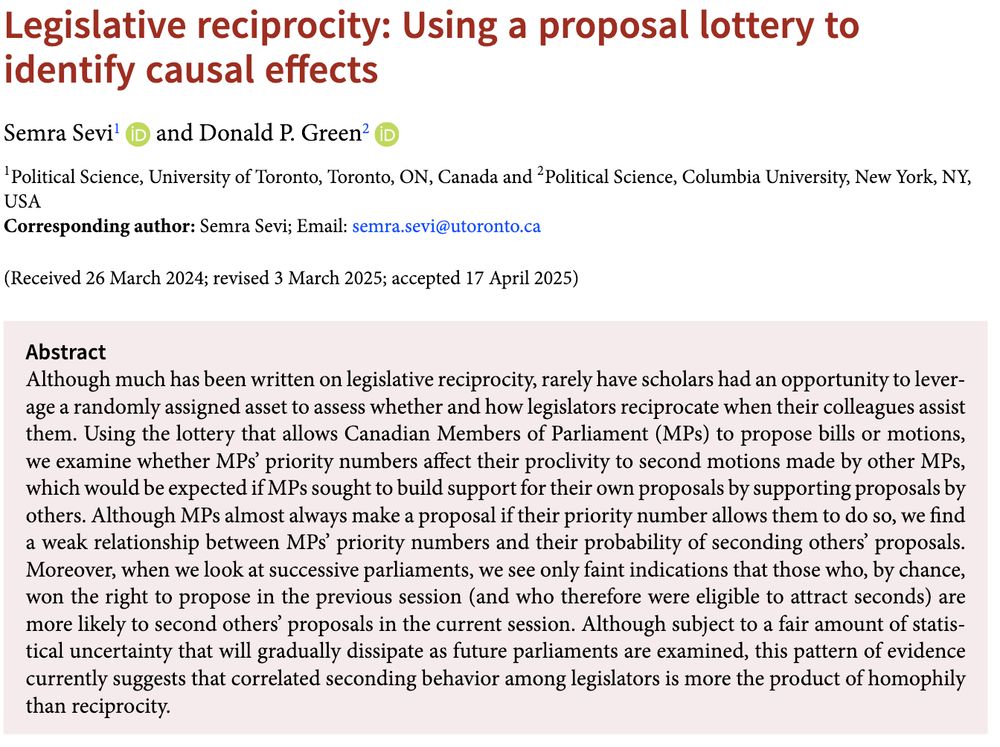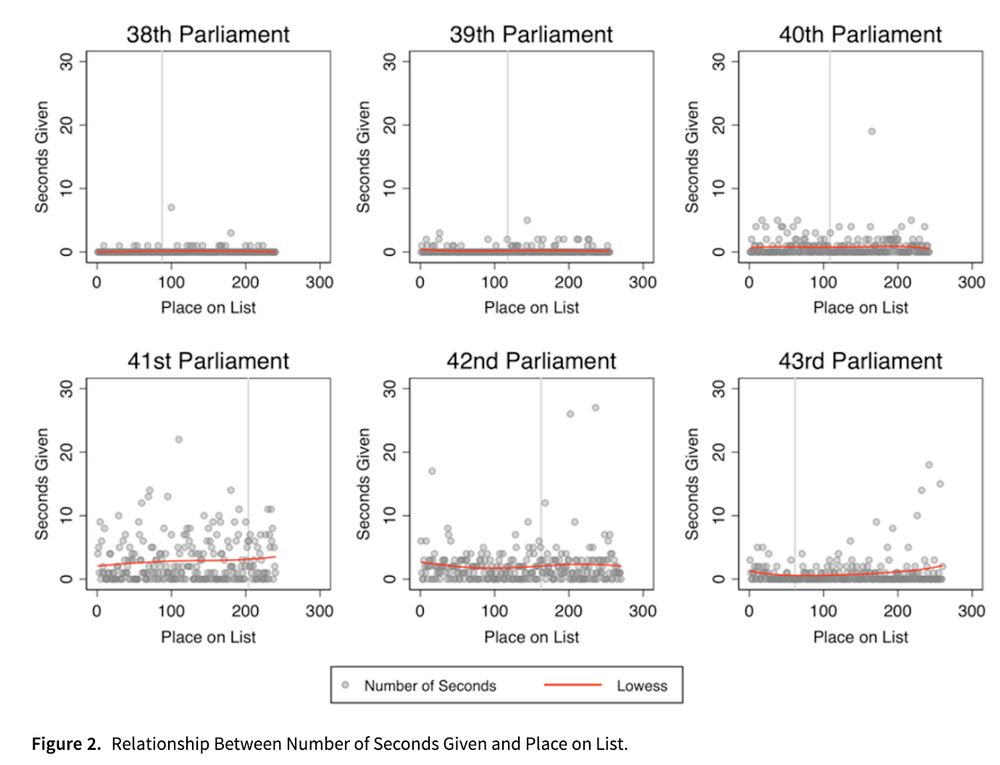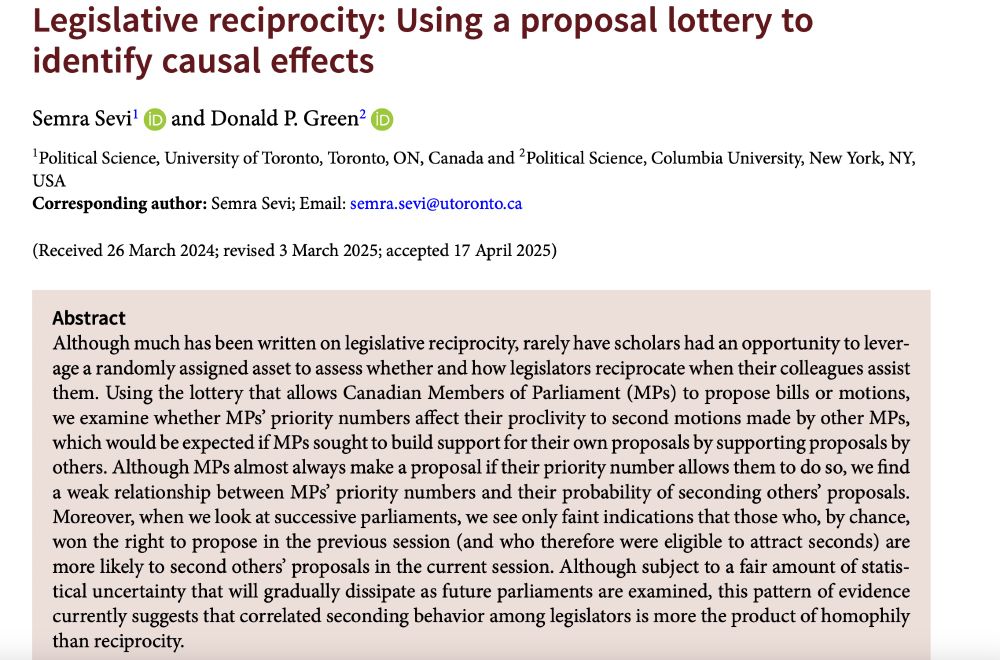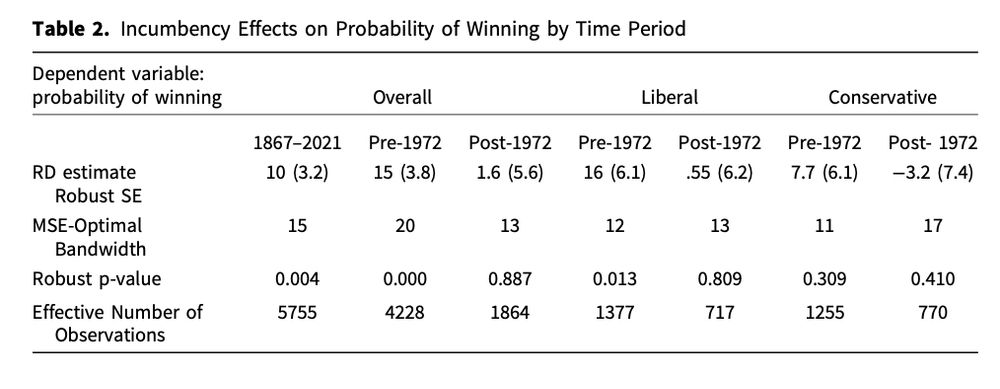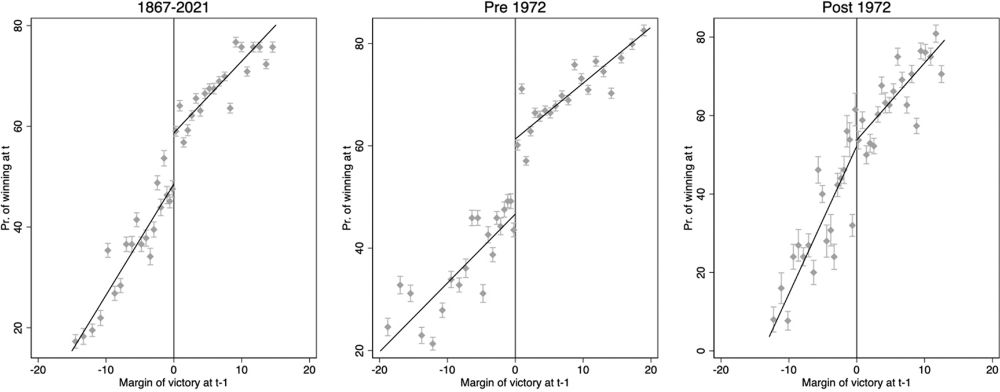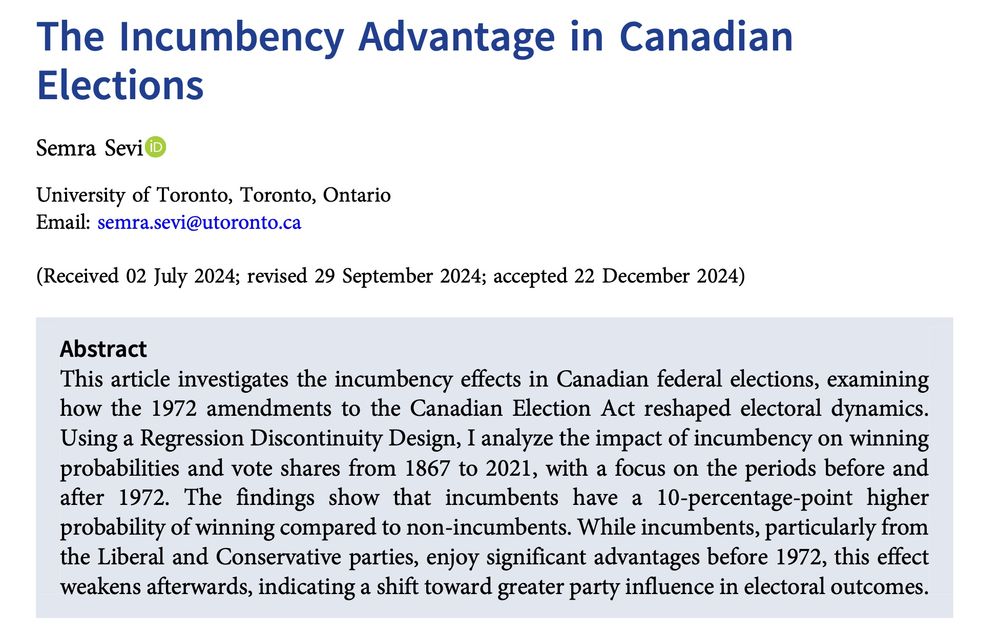Semra Sevi
@semrasevi.bsky.social
1.4K followers
3.1K following
33 posts
Assistant Professor of Political Science at the University of Toronto
www.semrasevi.com
Posts
Media
Videos
Starter Packs
Semra Sevi
@semrasevi.bsky.social
· Sep 4
Reposted by Semra Sevi
Semra Sevi
@semrasevi.bsky.social
· Sep 4
Semra Sevi
@semrasevi.bsky.social
· Aug 16
Semra Sevi
@semrasevi.bsky.social
· Aug 16
Semra Sevi
@semrasevi.bsky.social
· Aug 15
Semra Sevi
@semrasevi.bsky.social
· Aug 15

Do Voters Support a Female President? Evidence from a List Experiment - Semra Sevi, Can Mekik, 2025
Public opinion polls indicate that a significant portion of the American public would be willing to vote for a qualified female presidential candidate. However,...
journals.sagepub.com
Semra Sevi
@semrasevi.bsky.social
· Aug 10
Reposted by Semra Sevi
Semra Sevi
@semrasevi.bsky.social
· Jul 11
Semra Sevi
@semrasevi.bsky.social
· Jul 11
Semra Sevi
@semrasevi.bsky.social
· Jul 11
Semra Sevi
@semrasevi.bsky.social
· Jul 11
Semra Sevi
@semrasevi.bsky.social
· Jul 11
Semra Sevi
@semrasevi.bsky.social
· Jul 11
Semra Sevi
@semrasevi.bsky.social
· Jun 9
Semra Sevi
@semrasevi.bsky.social
· Jun 9
Reposted by Semra Sevi
Reposted by Semra Sevi
Semra Sevi
@semrasevi.bsky.social
· May 1


